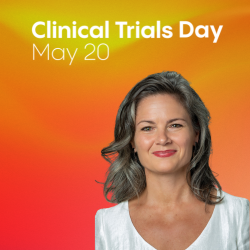Remote monitoring and decentralized trials (DCTs) appear to be here to stay, even as COVID-19 subsides as a disruptor—and Kate Day, senior clinical research associate at Merck, couldn’t be happier.
Calling the move toward remote monitoring “a natural evolution,” Day notes the pandemic only accelerated the trend. Now, however, is not the time to revert to requiring onsite visits for everything, she says. “Remote monitoring is beneficial in a lot of ways, [so] let’s not eliminate it” now, even if the pandemic has removed some of its immediate necessity, Day says.
Further, while she’s a big fan of leveraging them, Day stresses that hybrid onsite/offsite and full DCT approaches were never intended to completely supplant onsite visits.
Still, rather than lamenting the rise of DCTs, Day believes we should celebrate their strategic usage. “Hybrid is more ideal for everyone, starting with less travel for site staff and patients,” she notes.
A veteran of several hybrid trials in the past several years, Day has tallied up some important lessons learned to help others succeed and avoid some of the early obstacles she encountered.
For example, when a trial is a hybrid or of the full DCT flavor, it is vital to establish a debrief meeting toward the end of the first site visit day, or early the next day, she says. Reason? When a trial is conducted onsite, interactions with principal investigators and other site staff are organic and more likely to occur.
However, when a site is virtual, “you can go months without speaking to them” unless you establish expectations and even appointments at the outset, Day says. “You still want to be engaged in a remote trial,” she notes. “It’s vital to connect with staff to get their input on how the trial is going as it ramps up.”
Author: Michael Causey



